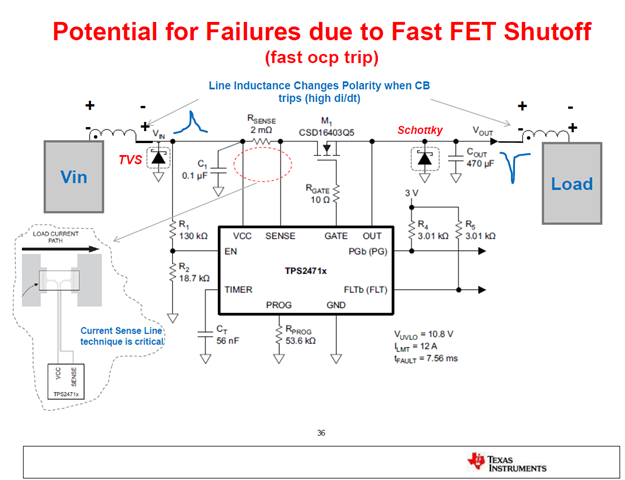Other Parts Discussed in Thread: TPS2492, TVS3300
Hello TI people,
We are designing a soft starter controller for our vacuum motor using the TPS2493 chip.
We have attached the design calculator for this motor which is running at a maximum 24V, 25A.
The motor load has an inductance of 0.763mH and 0.8ohm.
We have been facing issues with shorted MOSFETs and disabling the auto-retry function on the TPS2493 chip.
We have the following questions:
How to disable auto-retry on the TPS2493 chip?
Apart from shorting OV to ground, our circuit follows the design example schematic. (Attached Schematics)
Is shorting CT pin to ground sufficient?
Once the hotswap controller is fully turned on (i.e. PG goes low), can we ramp the motor straight to 100% PWM using motor driver? (There might be inrush current because of the Brushed DC motor nature)
IPP016N08NF2S - MOSFET.xlsx



